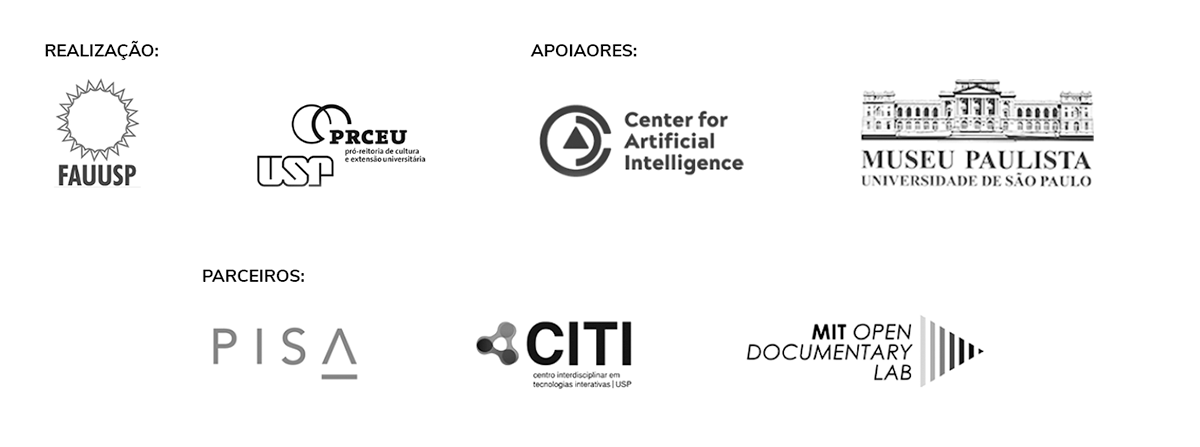Coordinated by Giselle Beiguelman, Bruno Moreschi and Bernardo Fontes.
Closed for works since August 2013, the Museu Paulista of the University of São Paulo will reopen in 2022. It was inaugurated on September 7, 1895 as the Natural History Museum and declares itself a Historical Museum in the context of the commemorations of the first centenary of Independence, under the direction of Afonso d’Escragnolle Taunay (1917-1945). Today the institution has a collection of over 450 thousand items, spanning from the 17th century to the present day, and is undergoing a process of architectural renovation and updating of its curatorial premises, which includes the gradual availability of its collection on Wikipedia and Wikidata. This extensive collection, which is essential for understanding the construction of the São Paulo imaginary and its historiography about Brazil, was the basis for the development of experiments using Artificial Intelligence carried out by the demonumenta project.
The motto of these experiments was to activate a critical discourse on the History of Art, simultaneously questioning the procedures of historical colonialism and datacolonialism. How does Artificial Intelligence reproduce the ways in which official historical narratives are perpetuated? How to elaborate methodologies, based on AI, to map the constituent elements of the imagery representations of historical colonialism?
From these questions, five analytical experiments were developed, based on the systematization of a database with images (pictorial and iconographic) that became part of the collection of the Museu Paulista – USP during the administration of Afonso Taunay and in the portraits of black people made by Militão Augusto de Azevedo when he owned the studio Photographia Americana (1875-1885).
In the database, we record the patterns found in its collection. With this universe of representations, we produced the artistic works Naturezas numéricas [Numeric Natures]; Arqueologia das cores [Archeology of Colors]; Álbum afirmativo da cidade de São Paulo [Affirmative Album of the City of São Paulo] and Ignorância Artificial [Artificial Ignorance].
These visual experiments with Artificial Intelligence were accompanied by sound experiments developed by the artist and researcher at GAIA, Gabriel Lemos. Lemos created a dataset composed of marchinhas, commemorative and nationalist songs that are part of Brazilian marching band repertoire. Brazil’s national anthem, the anthem of São Paulo as well as the anthem of the Sesquicentennial of Brazilian Independence were also added to this material. From this dataset, he trained two types of neural networks – SampleRNN and MelGAN-VAE – to produce our soundtracks. They reflect the Brazilian and São Paulo officialdom and reproduce brass-like sounds, that are characteristic of marches and anthems.
It is important to emphasize that the face-to-face with the history of art and contemporary technologies undertaken in these processes was only possible thanks to an ongoing policy by Museu Paulista to increasingly give access to the images and metadata of its works on Wikipedia and Wikidata, thus allowing its collection to be subject to new resignifications and displacements.
From the Deconstruction of the Museu Paulista Collection to the Construction of the dataset
Artificial Intelligence (AI) demands an organized database for machine learning processes. For this, companies use legions of remote workers who, through online platforms like Amazon Mechanical Turk, are in charge of organizing that data. This work is done in a precarious and decontextualized way.
In the opposite direction to this process, we began with a selection from the Museu Paulista collection, focusing on the works and iconographic documentation acquired and produced during the period in which Afonso Taunay was museum director.
From this set, we developed a methodology for cataloging its images. Over two months, FAUUSP students worked with faculty members and researchers from GAIA / C4AI, to map the areas of the works of art in the collection that allow us to understand elements of the colonialism imaginary and its aesthetic projections.
This mapping constituted the dataset used for the development of three experiments based on machine learning:
- Naturezas numéricas [Numeric Natures]: work done with the skies and landscapes of the Museu Paulista collection
- Arqueologia das cores [Archeology of Colors]: a proposal for another way of seeing the museum’s works from its most striking palettes
- Paisagens possíveis [Possible Landscapes]: results of crossing the categories of our dataset about the Museu Paulista with another database related to the History of Art; Wikiart
Categories Defined from the Works of Museu Paulista:
Sky, fauna, flora, white man, indigenous man, black man, white woman, indigenous woman, black woman, indigenous child, black child, white child, enslaved, ex-enslaved, pioneer, coffee grower, farmer, religious figure, military, political, rural worker, urban worker, domestic artifacts, external artifacts, political administrative space, cultural space, church, industrial space, streets and squares, wealthy home, poor home.




